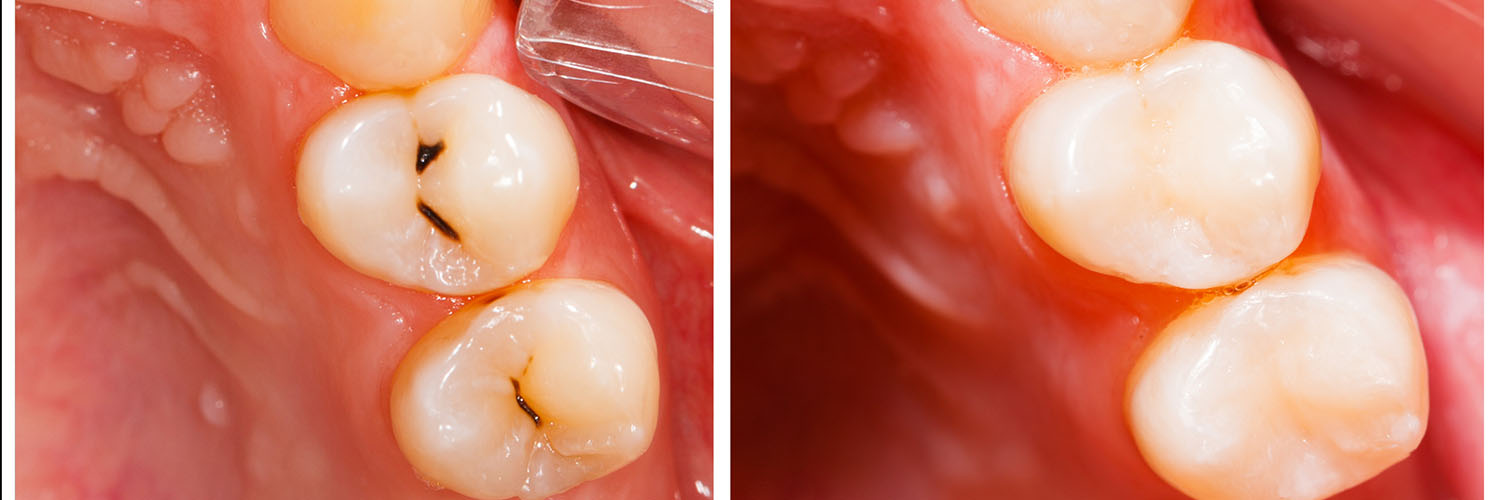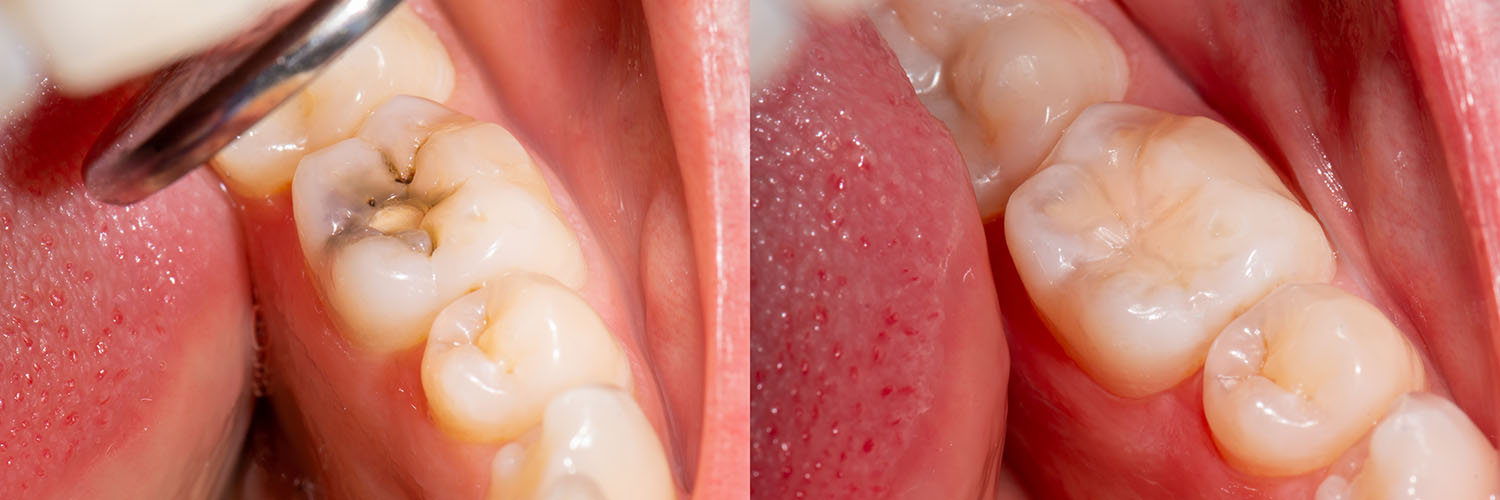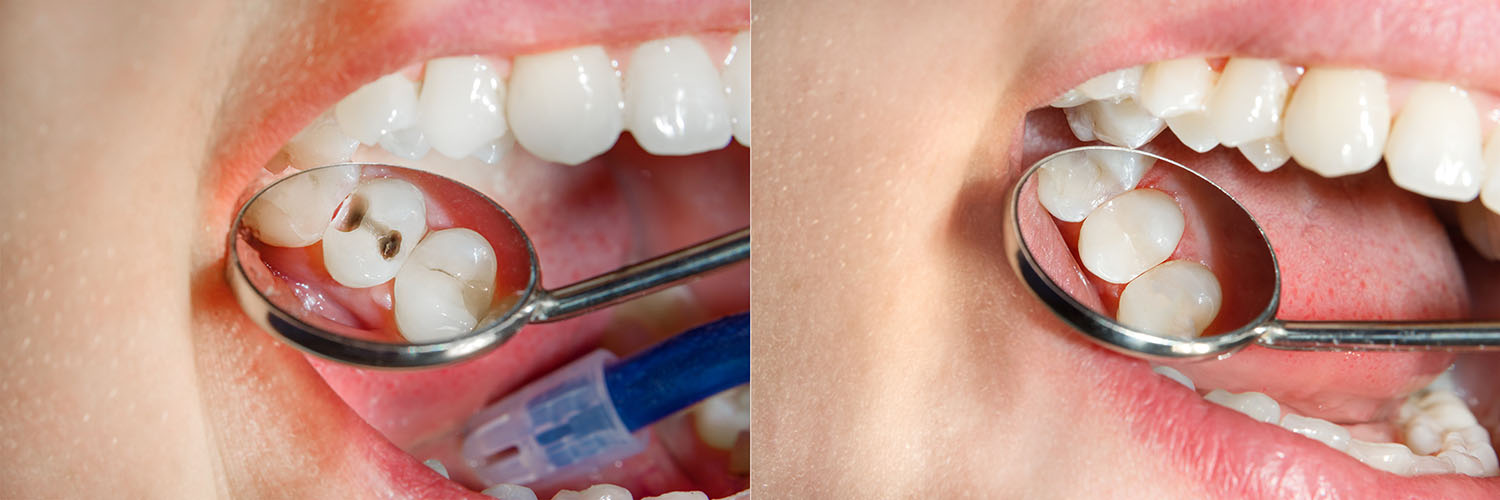

When a cavity or minor injury removes tooth structure, a dental filling is the most direct way to restore form, function, and comfort. A properly placed filling seals the damaged area against bacteria, rebuilds the chewing surface, and helps prevent further breakdown of the tooth.
Tooth decay remains one of the most common oral health concerns across all ages, so restorative treatments like fillings are a routine — but vital — part of modern dentistry. The goal is not merely to stop decay, but to preserve as much healthy tooth as possible while delivering a durable, natural-looking result.
At Silk Dental Delray Beach (formerly Marc Bilodeau DMD), we emphasize conservative techniques that remove only the damaged tissue and support the remaining tooth. That approach helps teeth last longer and often avoids the need for more extensive treatment later on.
Attempts to repair teeth go back thousands of years, but materials and methods have evolved dramatically. Early restorations were primitive and offered limited longevity; now, clinicians can choose from a variety of biocompatible materials that respect both function and appearance.
The last several decades have seen a shift away from solely prioritizing strength toward balancing durability with aesthetics and tooth preservation. New adhesive techniques and resin-based materials allow restorations that bond to natural tooth structure, reducing the need to remove extra enamel or dentin during preparation.
A filling should feel like part of your tooth — not an obvious add-on. That means matching color, contouring for comfortable chewing, and shaping contacts with neighboring teeth to maintain healthy bite dynamics. These details influence how long a restoration performs and how comfortable the tooth feels over time.
Our restorative decisions prioritize predictable outcomes: proven materials, careful technique, and finishing steps that minimize sensitivity and maximize durability. We explain options clearly so patients can choose the approach that fits their goals for appearance and longevity.

Today’s restorative materials give dentists and patients a range of choices, each with advantages for particular situations. Selecting the right material depends on the size and location of the cavity, cosmetic priorities, and the tooth’s role in chewing.
Rather than a one-size-fits-all solution, the best outcomes come from matching the material to the clinical need — for example, choosing a tooth-colored option for visible front teeth while favoring high-wear materials in back teeth that handle heavier forces.
Composite fillings are resin-based restorations that are shaded to blend with your enamel. They bond directly to the tooth, which can strengthen the remaining structure and conserve more of the natural tooth during preparation.
Because they are versatile and aesthetic, composites are frequently chosen for visible teeth and for repairs where preserving tooth shape is a priority. They are well-suited for small to moderate cavities and for cosmetic bonding tasks.
Amalgam has a long track record for durability and wear resistance, making it a reliable choice for large restorations in molars. While not tooth-colored, amalgam remains an effective material when strength is the primary concern.
Amalgam’s longevity is an advantage in high-stress areas, though today there are many metal-free alternatives that can provide both strength and a more natural appearance.
Glass ionomers chemically bond to the tooth and release fluoride over time, which can be beneficial for patients at higher risk of decay. These materials are often used for smaller restorations, root-surface lesions, or for pediatric teeth.
Because they’re less wear-resistant than other fillings, glass ionomers are frequently employed where moisture control or fluoride release is especially useful rather than for long-term heavy chewing surfaces.
Ceramic restorations are custom-made outside the mouth and cemented into place. They offer superior aesthetics and excellent resistance to staining and wear, making them a strong choice for visible areas or larger defects where a direct filling may not be ideal.
Inlays and onlays preserve tooth structure while restoring complex shapes and can provide a near-natural look with exceptional longevity when fabricated and bonded precisely.
Gold alloys and specialized metals are still used where exceptional strength and fit are required. These restorations are biocompatible and long-lasting, though they are less commonly requested today due to aesthetic preferences for tooth-colored options.
When corrosion resistance and mechanical stability are primary goals, these materials remain an important tool in the restorative toolbox.

Treating tooth decay begins with a careful assessment that may include visual inspection, digital X-rays, and tactile evaluation. This diagnostic process determines the size of the lesion, its exact position, and whether the decay has reached sensitive internal tissues.
Once the clinical picture is clear, the dentist outlines a treatment plan that balances preserving tooth structure with delivering a durable repair. For many small to moderate cavities, the plan is straightforward: remove the decay and replace the lost tooth material with a suitable filling.
Most routine fillings are placed under local anesthesia so you remain comfortable throughout the procedure. We use gentle techniques and contemporary instruments — including bonding systems and, when appropriate, air abrasion or lasers — to minimize patient discomfort and maximize precision.
In cases where anxiety is a concern, the practice offers options in sedation dentistry to help patients feel calm and relaxed during treatment. Your comfort and understanding of the process are priorities from consultation through completion.
After the appointment, it’s normal to experience temporary numbness from local anesthesia and mild sensitivity in the treated area. Sensation typically returns within a couple of hours, and any sensitivity should steadily improve over several days as the tooth adjusts.
Protecting numb tissues
While anesthesia is active, avoid chewing, hot beverages, or manipulating the area to prevent accidental biting of lips, cheeks, or tongue. This precaution reduces the risk of injury until normal feeling returns.
Possible bite adjustments
On occasion a restoration may feel slightly high when you bite. If the filling interferes with your normal bite, a quick adjustment in the office will restore comfort. Many patients notice only a brief period of accommodation.
Ongoing care for long-lasting results
With consistent oral hygiene and routine dental visits, modern fillings can last for many years. Regular brushing, flossing, and professional exams help detect wear or secondary decay early so repairs can be made before the problem grows.
If you experience increasing pain, persistent sensitivity, or any unusual symptoms following a restoration, contact our office so we can evaluate and address the issue promptly.
We are committed to high-quality, evidence-based restorative care delivered with compassion and attention to detail. Contact us for more information about dental fillings and which option may be best for your smile.

If the pleasure of eating a delicious bowl of ice cream or sipping a soothing cup of tea gets overshadowed by dental pain that makes you wince; it's time to contact our office. As skilled providers of care, we'll determine what's causing your discomfort and perform the treatment required to alleviate your symptoms and get you back on the road to oral health.
Cavities develop because of an infectious process that causes progressive damage to tooth structure. Despite starting as a pinpoint defect on the outermost enamel layer of your tooth, untreated dental decay progressively compromises more and more healthy tooth structure as it works its way to the inner layers of your tooth.
Yes, you can still develop tooth decay on other surfaces of the tooth, around the margins of an old filling, or in fewer instances, recurrent decay underneath it. For this reason, it's essential to maintain excellent oral hygiene, a diet low in sugary beverages and sweets, and be sure to visit our office for routine checkups and care. While tooth decay is second only to the common cold in frequency, it's almost entirely preventable.
We value the time and comfort of our patients. If cavities are located on adjacent teeth, or in the same section of your smile, it may be possible to treat more than one tooth during your visit. However, how much is done each visit depends on several factors. We keep our patients well informed and tailor every treatment plan and visit to address their unique needs.
Addressing concerns on the presence of elemental mercury in silver fillings, the American Dental Association (ADA), The Center for Disease Control and Prevention (CDC), the FDA, and the World Health Organization have all stated that amalgam restorations do not pose a risk to health. However, individuals with allergies or sensitivities to the metals in dental amalgam are advised to pursue other restorative options.
Dental fillings are performed under local anesthesia to help ensure your comfort throughout the entire procedure. The involved tooth remains completely numb for the extent of your visit. Within one or two hours after the procedure is completed, the local anesthetic will gradually wear off, and normal sensations return.
A tooth-colored composite filling is fully hardened and set by the end of your visit. However, we may advise you to wait a couple of hours until the local anesthesia has completely worn off. This advice is to help ensure you don't accidentally bite your lip, cheek, or tongue while still numb.
The lifetime of a dental filling varies depending on the type of material used. While popular dental materials can last a decade or more with proper care, they can degrade over time, wear down, or even break. When this happens, you may experience some tooth sensitivity, a jagged edge, or a loose or dislodged piece of filling material. Whatever the case may be, it's essential to get the filling replaced before the tooth sustains further damage or other consequences arise. Beyond taking good care of your smile to help ensure the longevity of your fillings, our office regularly checks the status of your existing fillings as part of a routine checkup exam.
Dental fillings are an essential investment that serves to preserve and protect the health of your smile. With that said, how much a filling costs depends on the number of surfaces of the tooth involved and the filling material that is used. Amalgam restorations are the most economical. While tooth-colored composite fillings have a slightly higher cost, they offer the added benefits of being metal-free and much more aesthetically pleasing. Ceramic fillings, inlays, and onlays are more expensive than the preceding options but provide outstanding, long-lasting, and natural-looking results.
Dental insurances typically cover the cost of dental fillings. While we work with you to maximize your insurance benefits, there may still be an out-of-pocket expense. At the office of Silk Dental Delray Beach (formerly Marc Bilodeau DMD), we strive to help you begin care without any additional financial stress or delay.
Quick Links